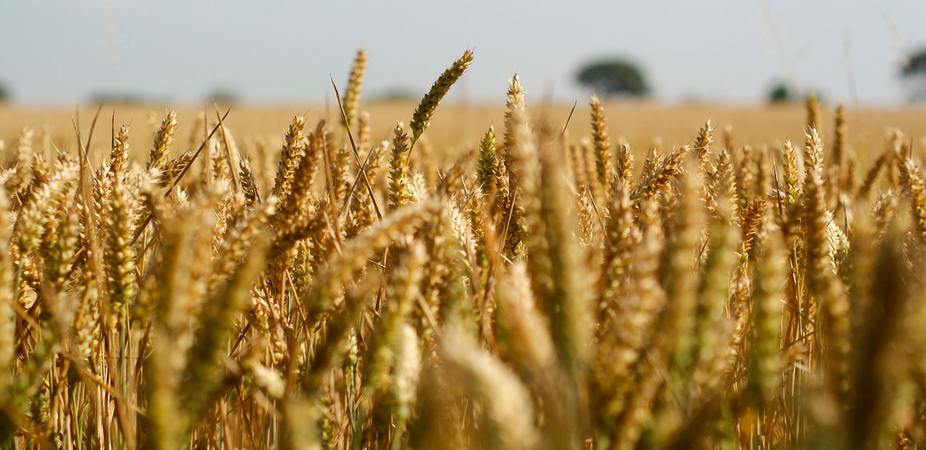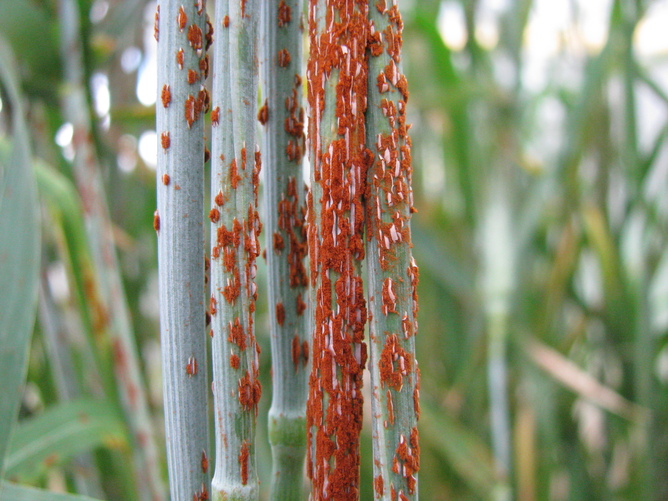Rusts – a type of fungal disease – can cause the total wipeout of a whole seasons’ crops. Image: Flickr/Jonny Boy.
By Evans Lagudah, Chief Research Scientist and Sambasivam Periyannan, Postdoctoral Fellow.
Rusts are a type of fungal disease that affect many plants, including wheat and some fruits. In Australia, rusts are a particular concern to wheat and barley farmers, with whole seasons’ crop sometimes being wiped out. Now new Australian research has added another line of defence against these crop diseases.
Australian crops have been well protected for the past 60 years by breeding rust-resistant crop varieties that inhibit the development of rust diseases. Rust pathogens, however, are very adaptable and can rapidly evolve into new strains that can infect previously rust-resistant plants.
In 1999 a new virulent strain of stem rust was discovered in Uganda (so-called “Ug99”) which has spread to Iran and is encroaching on Asia. Ug99 is particularly devastating as it can overcome many of the current resistance genes leaving many wheat crops vulnerable to infection.
A few years later a new virulent strain of stripe rust appeared, this time in Australia, and has continued to cause serious annual crop losses ever since. It is a constant battle for wheat breeders to try to develop new cereal varieties with effective and long-lasting rust resistance.
The spores from the fungus can travel long distances on wind currents and on clothing. Long and short haul flights aid the fungus further in spreading around the globe.
How to find a gene
As part of an international team, we identified a wheat gene that recognises when it is being attacked by rust. This gene helps wheat protect itself against a number of stem rust races, including the virulent Ug99 strains.
Disease-causing organisms, such as rusts, produce small proteins that suppress a plant’s defences. The newly identified rust resistance gene is part of a family of proteins that either directly or indirectly recognise the defence suppressing proteins exuded by the rust pathogen.
Wheat rust on a wheat stem. Image: Evans Lagudah and Zakkie Pretorius.
To find the gene, our team crossed a wheat variety known to be resistant to rust, with another of the same variety that wasn’t. We then compared whether the progeny of the cross were resistant or susceptible not.
By comparing the progeny, we could see where there were variations in DNA. These “fingerprints” were likely locations for a rust resistance gene. The gene was found by honing in on these locations.
The last step was inserting the selected gene into a wheat plant susceptible to rust in a process known as transformation. We knew we had the right gene when this plant then became resistant to rust.
Australia’s genetic border patrol
The advance we’ve made here is identifying the specific gene responsible for rust resistance, meaning we can create a perfect genetic marker. In the past these markers weren’t as perfect, because we didn’t know the specific location of the gene.
It is also the first cloned resistance gene effective against a broad spectrum of stem rust races. Understanding the molecular basis of how this gene confers disease resistance in crop plants will enable further refinements and improvements to keeping rust at bay.
Genetic defence isn’t the only answer to controlling crop pests like rust. If the rust resistance gene were deployed on its own in wheat crops we’d expect it to provide rust resistance for about three years. Using a combination of different resistance genes will mean resistance lasts longer.
There are other ways to help control rust, such as fungicides. Avoiding susceptible wheat varieties and removing wheat between seasons stops the fungus building up in the crop. However, issues surrounding long term sustainability and environmental impact of pesticides, means that the use of resistance genes remains the most cost effective and environmentally friendly approach to control the fungus.
This article was originally published at The Conversation. Read the original article.



